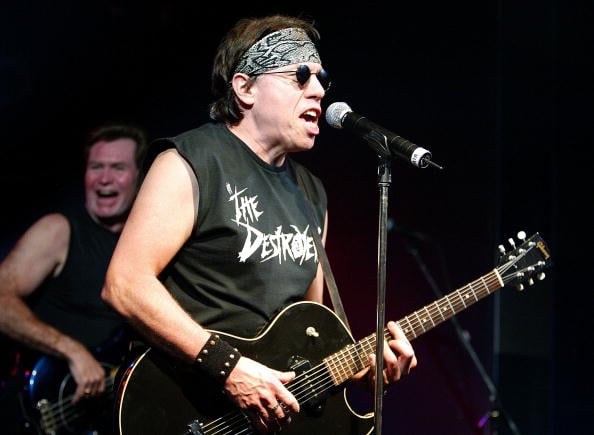George Thorogood at a Glance
- Categories: Celebrities, Celebrities > Rock Stars
- Net Worth: $10 Million
- Birthdate: Feb 24, 1950 (74 years old)
- Birthplace: Wilmington
- Gender: Male
- Profession: Singer, Songwriter, Musician, Guitarist, Singer-songwriter, Bandleader
- Nationality: United States of America
- Height: 6 ft 1 in (1.87 m)
George Thorogood’s Net Worth: A Look at the Blues-Rock Icon’s Career and Wealth
George Thorogood is a celebrated American musician, singer, and songwriter, renowned for his electrifying blues-rock sound and energetic stage presence. Beyond his musical achievements, many fans are curious about his financial standing. This article delves into George Thorogood’s net worth, exploring the various facets of his career that have contributed to his financial success, and offering insights into his personal life.
Early Life and Musical Beginnings
George Thorogood was born on February 24, 1950, in Wilmington, Delaware. His upbringing was marked by a passion for both sports and music. He developed a love for baseball, playing semi-professional baseball as a second baseman during the 1970s. Simultaneously, he nurtured his musical talents, picking up the guitar at a young age and showing an early aptitude for the instrument.
During his high school years, Thorogood forged a significant friendship with drummer Jeff Simon. This early connection would later play a crucial role in the formation of his band, The Delaware Destroyers. This foundational period laid the groundwork for his future musical pursuits, shaping his skills and paving the way for his professional career.
Career: From Solo Performances to The Delaware Destroyers
Thorogood initially honed his skills as a solo performer, drawing inspiration from blues legends such as Robert Johnson, Elmore James, and John P. Hammond. This early exposure to blues music heavily influenced his style. In 1973, he took a pivotal step, forming a band with his childhood friend Jeff Simon, which they initially called The Delaware Destroyers.
As the band evolved, they added additional musicians, refining their sound to blend Chicago blues with rock and roll. Early performances at venues like the Rathskeller bar at the University of Delaware and the Deer Park Tavern helped them establish a local following. The band shortened their name to The Destroyers, marking a key step in their identity. Simultaneously, Thorogood supplemented his income by working as a roadie for Hound Dog Taylor.
The first demo, “Better Than the Rest,” was recorded in 1974 but didn’t see an official release until 1979. However, the band released their debut album “George Thorogood and the Destroyers” in 1977. The following year, they released “Move It On Over.” Early successes included songs like “Please Set a Date” and “Who Do You Love.” Rounder Records, a label with early folk music roots, signed them, and the success of The Destroyers helped fuel the label’s rise in the 1970s.

Paul Kane/Getty Images
The Destroyers cultivated strong relationships with fellow bands, particularly The Nighthawks, a blues band from Washington D.C. A memorable encounter took place at the Cellar Door and Desperados, where both bands played different venues on the same night and united for a rendition of Elmore James’s “Madison Blue”. These bands’ musicians would frequently join each other during shows, as demonstrated in 1985, when Jan Zukowski, the bass player for The Nighthawks, joined Thorogood’s set with Bo Diddley and Albert Collins at the Live Aid concert in Philadelphia, Pennsylvania.
Breakthrough and Mainstream Success
Despite their success, neither Thorogood as a solo artist nor The Destroyers achieved mainstream recognition initially. This changed in 1981 when The Destroyers were invited to tour as a support act for The Rolling Stones. This opportunity significantly increased their visibility. In 1982, Thorogood was the featured musical guest on “Saturday Night Live” in October. Throughout the 1980s, The Destroyers maintained a robust touring schedule. They embarked on the “50/50” tour in 1981, playing shows in all 50 states in 50 days, demonstrating their dedication and stamina.
“Bad to the Bone” and Beyond: The Height of Popularity
In 1982, after his contract with Rounder Records expired, Thorogood signed with EMI America Records. The same year, he released the single and album “Bad to the Bone,” which became a pivotal moment in his career. The album went gold, and the song became iconic, featured in numerous television shows, films, and commercials, cementing its place in popular culture. The band went on to release two more gold albums, “Maverick” and “Born to Be Bad,” in the 1980s. “Maverick” included Thorogood’s only “Billboard” Hot 100 hit, “I Drink Alone.”

